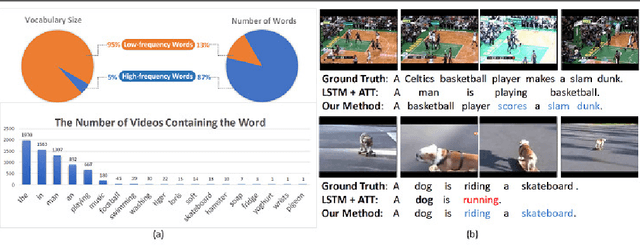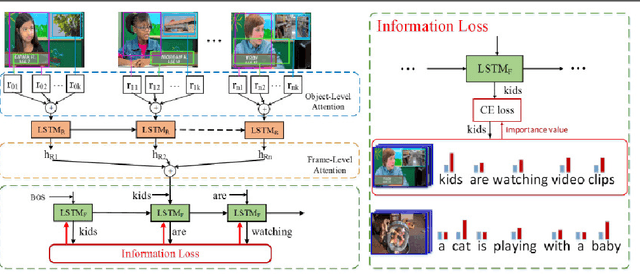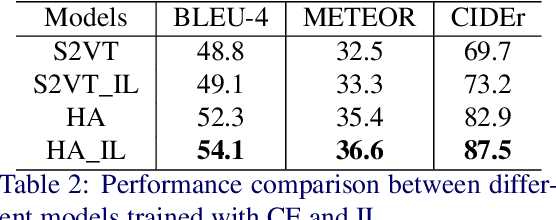Not All Words are Equal: Video-specific Information Loss for Video Captioning
Paper and Code
Jan 01, 2019



An ideal description for a given video should fix its gaze on salient and representative content, which is capable of distinguishing this video from others. However, the distribution of different words is unbalanced in video captioning datasets, where distinctive words for describing video-specific salient objects are far less than common words such as 'a' 'the' and 'person'. The dataset bias often results in recognition error or detail deficiency of salient but unusual objects. To address this issue, we propose a novel learning strategy called Information Loss, which focuses on the relationship between the video-specific visual content and corresponding representative words. Moreover, a framework with hierarchical visual representations and an optimized hierarchical attention mechanism is established to capture the most salient spatial-temporal visual information, which fully exploits the potential strength of the proposed learning strategy. Extensive experiments demonstrate that the ingenious guidance strategy together with the optimized architecture outperforms state-of-the-art video captioning methods on MSVD with CIDEr score 87.5, and achieves superior CIDEr score 47.7 on MSR-VTT. We also show that our Information Loss is generic which improves various models by significant margins.
 Add to Chrome
Add to Chrome Add to Firefox
Add to Firefox Add to Edge
Add to Edge